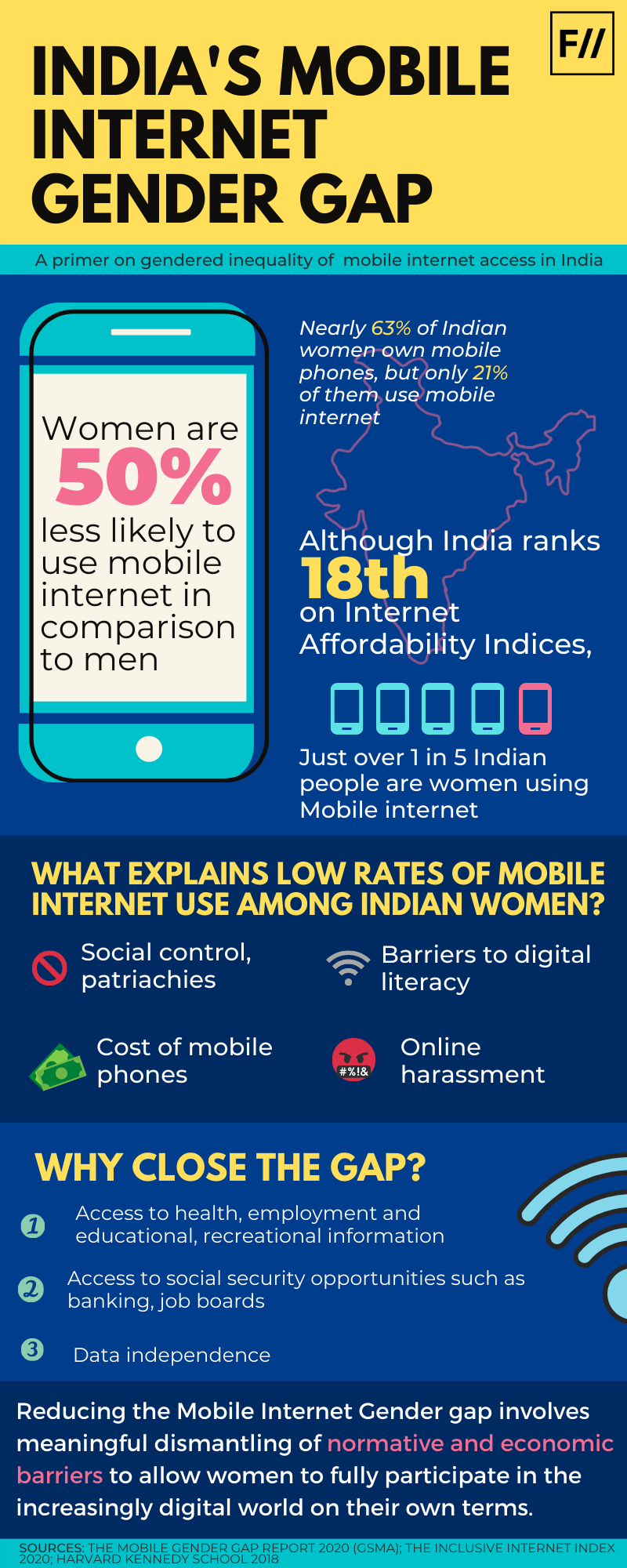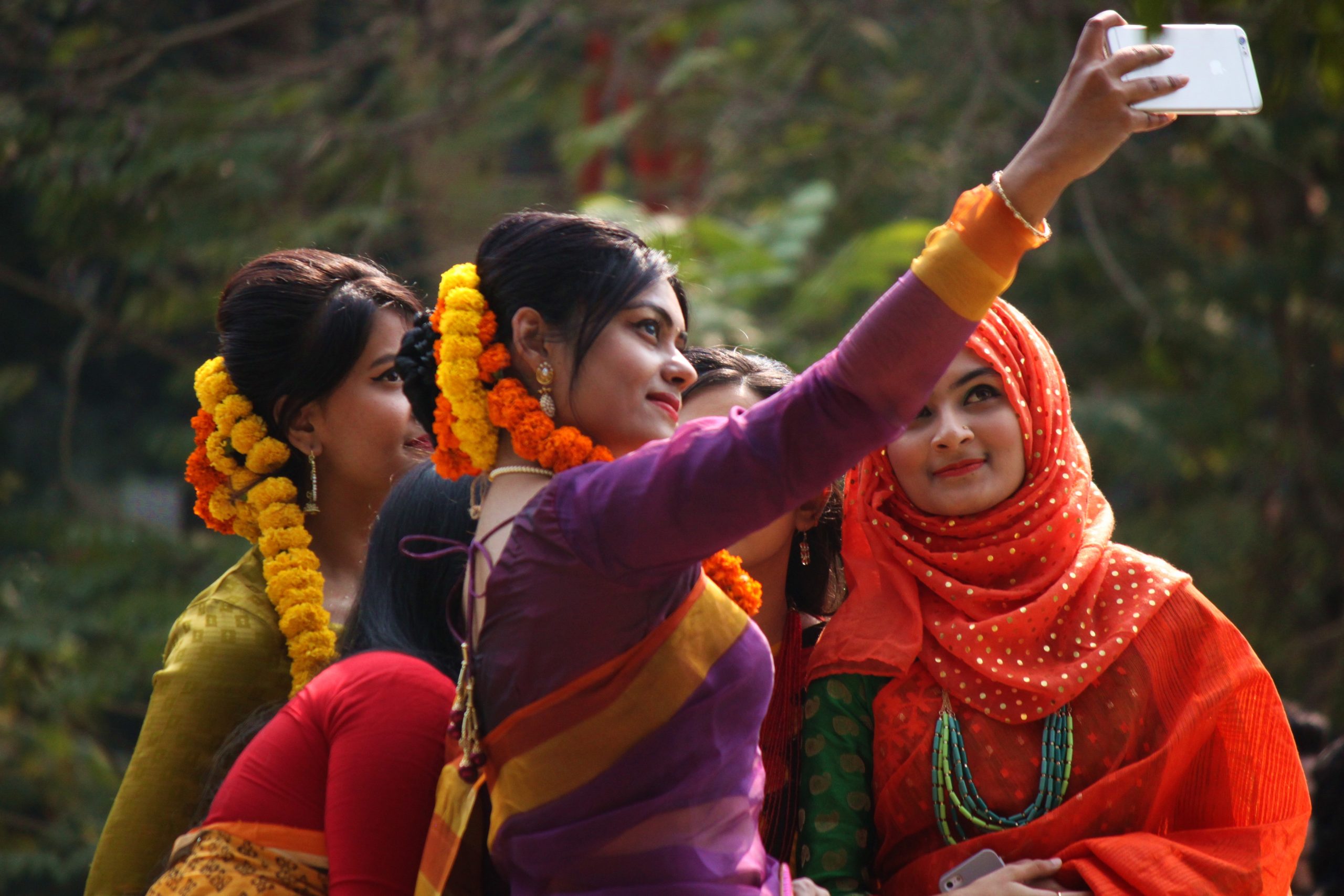I, for one, am grateful for the 4 GB of data I receive per day for only ₹299 per month. India’s high ranking for internet affordability (18th in the world overall) echoes this taken-for-granted privilege. However, affordable mobile data in India contributes to the illusion that the internet is accessible to most people. Highlighted by the increasingly online reality of the COVID-19 pandemic, the real story is more complex than it is optimistic. A 50% gap exists between men and women’s internet access, according to Connected Women: A Mobile Gender Gap Report, published by UK-based GSM Association in March 2020.

Research on the mobile internet gap, if any, has been conducted in the gender binary. It is albeit qualitatively useful as it demonstrates the massive difference in internet access among men and women, across marital status, urban-rural divides and interestingly application usage. Since most people in India access the online world via mobile phones, usage of mobile internet is a reliable indicator to observe differences in access. Shockingly, only 21% of women are reported to use mobile internet services, despite 63% of them owning mobile phones.
Since most people in India access the online world via mobile phones, usage of mobile internet is a reliable indicator to observe differences in access. Shockingly, only 21% of women are reported to use mobile internet services, despite 63% of them owning mobile phones.
These numbers are remarkable for a country with relatively affordable mobile data. Additionally, there are huge costs of being left offline amidst increasing digitisation and democratisation of online public spheres. Women cannot access unique online information such as employment and social security opportunities, reproductive health advice, financial knowledge and management, and education (even more important in a COVID-era).
The internet is also a medium of networking and recreation, both equally important sites for agency of Indian women, who support each other through applications and mediums such as this one. Many women use the internet to bring their small businesses online, striding towards financial security. Moreover, the internet’s accessibility enables expression (via social media) and whistleblowing (#MeToo and equivalents). On net, mobile internet is a tool for empowerment.
Like the many gendered issues that plague the digital realm—gender representation in tech, algorithmic biases, online gender-based violence—differential access to the internet also justified by economic and normative barriers. The empowering nature of the internet threatens social control power patriachies (combined with class and caste dimensions) have over women. Village councils across India have often imposed fines or barred women and girls from owning mobile phones or accessing the internet.
Moreover, social policy has seldom pushed for digital and technological literacy among women, except for Google’s Saathi program. On the affective side, many women opt-out of online spaces because of past experiences or fears of online harassment and digital violence. Lastly, mobile phones are a significant investment even for middle income families.
There is a need for thoughtful and comprehensive policy, since women are less likely to access mobile internet for reasons unrelated to the price of mobile internet. With COVID-19, women’s financial precarities have swollen and there is a growing need to access health-related information. Closing the mobile internet gender gap is a step towards digital equity wherein women can access public spheres on their own terms.
Also Read: The Perils Of Being A Woman In The Online Realm | #Digital Hifazat
Featured Image Source: “Selfies with the festive mood” by Ashraf Siddiqui is licensed under CC BY-SA 2.0
About the author(s)
Sajneet is a History nerd who loves to bicycle.




